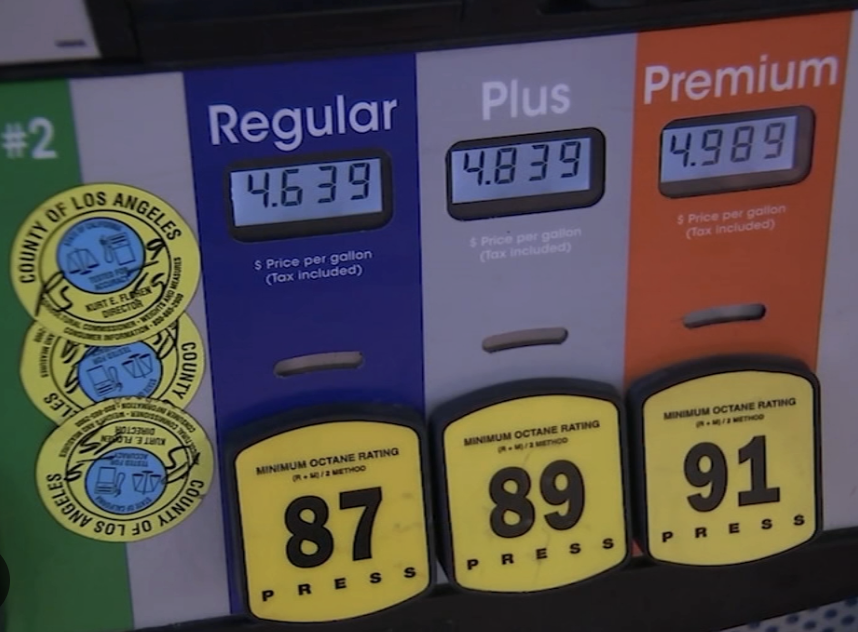California and Texas are two of America’s biggest states, known for their sunshine, coastlines and big lifestyles — Friday Night Lights vs. Hollywood stars.
But when a Dallas cowboy tops off the tank of his Ford F-150, he’s paying just $2.75 a gallon, while it costs nearly $5 a gallon for an L.A. lawyer to gas up his Porsche. And a study released earlier this year, led by Professor Michael A. Mische of USC’s Marshall School of Business, projects gas could reach $8 a gallon in the Golden State next year.
Why are Californians, living in a state once known for its energy industry, paying about $1.50 above the national average for gasoline?
“Stupidity.”
That’s the answer from Tom Giovanetti, president of the Institute for Policy Innovation. Like other analysts, Giovanetti says California’s exorbitant energy costs are self-inflicted. The state’s embrace of environmental, social and governance (ESG) policies is driving away refineries today and deterring new energy production in the future.
Phillips 66 announced last year that it would shutter its Los Angeles-area refinery in the fourth quarter of 2025. And two months after Valero announced it would close its Benicia refinery by April 2026, state officials were reportedly looking for a buyer to stem the loss, fearing the impact such a closure would have.
Combined, those refineries account for approximately 17 percent of the state’s gas supply, according to the U.S. Energy Information Administration (EIA).
These actions weren’t random. On Oct. 14, 2024, Gov. Gavin Newsom signed into law California Assembly Bill X2-1, also known as the “Emergency Petroleum Reserve Act,” giving regulators the power to mandate that oil refiners maintain minimum inventories of petroleum products. The goal was to prevent sudden price spikes and supply shortages. Critics called it regulatory overreach based on the debunked belief that energy companies were engaged in price gouging.
Two days later, Phillips 66 announced its refinery closure.
“The closure of the facilities is likely to contribute to increases in fuel price volatility on the West Coast,” the EIA said in an analysis of potential harm if the refineries do close as scheduled.
Other industry leaders are warning they may be next.
“What happens down the road, I have no idea, I won’t speculate,” said Mike Vormond, Chevron’s vice president of fuels. “We want to stay here. The problem is the policies of California are making it uninvestable.”
“What is stupid about what California is doing is there’s no need to restrict yourself for ideological reasons,” Giovanetti told InsideSources. “What we really should be out there doing is pursuing ‘all of the above’ strategies.”
The Institute for Policy Innovation is headquartered in Texas, where Giovanetti said policymakers have embraced both fossil fuels and renewables. During the brutal heat of Texas summers, the state’s grid pulls from wind and solar fields, which are becoming less expensive than traditional fuels.
“Texas hasn’t done it for ideological purposes, but the declining cost of wind and solar allows Texas consumers to get the best of both worlds,” he said, adding that, eventually, the market will shift away from fossil fuels for economic reasons.
Other states, like Colorado and Washington, appear to be following California’s lead.
In February 2024, Colorado regulators hit Suncor Energy’s Commerce City refinery with a $10.5 million fine — the largest in the state’s history — over alleged air pollution violations. Not to be outdone, Washington state recently fined HF Sinclair $1.3 million and Tesoro (operating as the Marathon Anacortes Refinery) $1.4 million for improperly storing waste. The August penalties levied by the state Department of Ecology are intended to deter future improper waste handling and encourage improvements in refinery operations.
California has lost six refineries since 2008. Two of those facilities converted to less profitable renewable diesel, a move incentivized by state regulators.
Industry leaders warn that these ESG mandates amount to government picking winners and losers in the energy sector. Policymakers are forcing premature shutdowns instead of allowing companies to innovate and transition at their own pace.
“Investing guidelines ought to focus on one thing, and only one thing: upholding the firm’s fiduciary duty to maximize shareholder returns. It’s that simple,” James Carter, an advisor on economic policy in the U.S. Treasury during the George W. Bush administration, told InsideSources.


